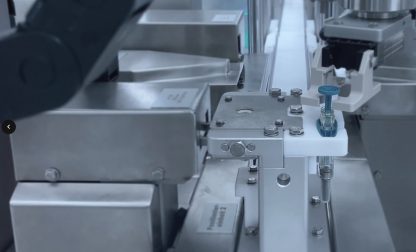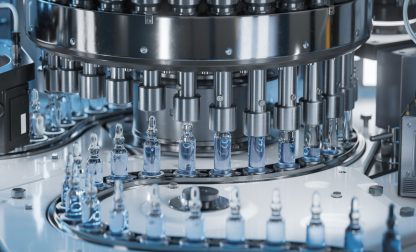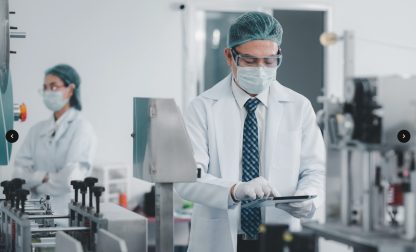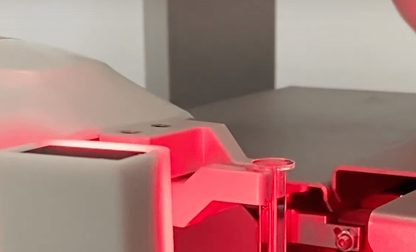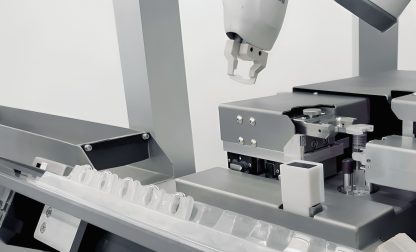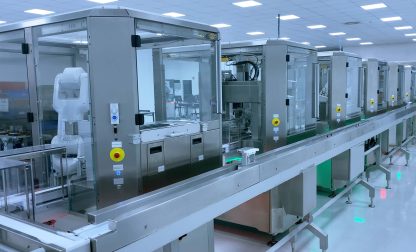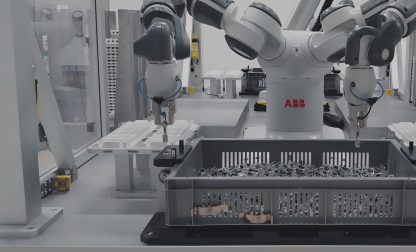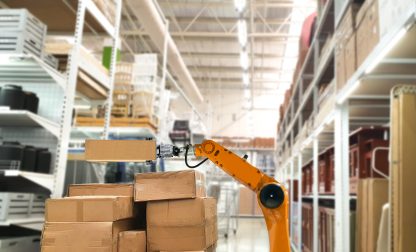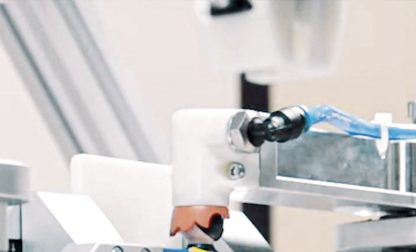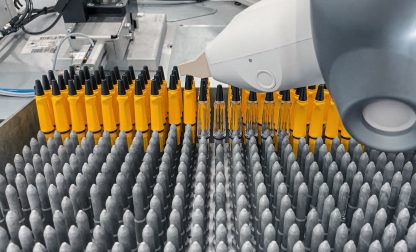Process automation simply explained
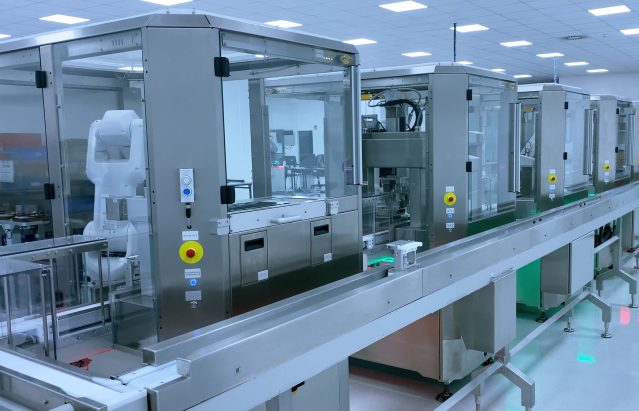
Process automation involves employing technology to automate repetitive tasks within a business process. This encompasses a range of technologies, including manufacturing automation powered by robots or business process automation (BPA).
In today’s business world, efficiency and accuracy are essential. Process automation is part of the digital transformation and changing how organizations work. But what is it, exactly? This guide simplifies the concept, covering its definition, benefits, challenges, and how ESSERT Robotics positions itself in the world of process automation.
What is process automation?
Process automation is about making operations more efficient. It is the practice of using technology to automate routine tasks, workflows, and processes within an organization. By doing so, it aims to reduce manual effort, minimize human error, and enhance the overall efficiency of these operations.
Automation technology is designed to handle repetitive tasks. These tasks are not limited to administrative activities like data entry, invoicing, and purchase order processing, but also extend to manufacturing tasks like product assembly or packaging. Instead of relying solely on human inputs, process automation introduces tools like robots and artificial intelligence to execute these tasks accurately and consistently.
Process Automation Definition
Process automation is the use of technology to optimize and streamline business processes, reducing manual effort and enhancing efficiency.
Process automation revolves around a set of core principles:
Streamlining workflow
Process automation aims to streamline the flow of work within an organization. It identifies repetitive and time-consuming tasks and automates them, reducing bottlenecks in the workflow.
Rules-based automation
Many process automation solutions operate based on predefined rules. These rules guide decision-making processes and ensure that tasks are executed consistently.
Optimizing customer experience
Automation can greatly enhance customer experiences by minimizing errors and ensuring consistent quality.
Benefits of Process Automation
The adoption of process automation brings four main advantages to businesses:
- Increased Efficiency
- Increased Quality by reducing errors
- Cost Savings
- Optimized Decision-Making
Automating processes streamlines operations, leading to increased efficiency. By eliminating manual tasks, it reduces the potential for human errors. Cost savings are another benefit, as process automation minimizes the need for manual labor and optimizes resource utilization.
Additionally, it provides valuable data-driven insights, which enhance decision-making by processing vast amounts of data quickly and accurately. These benefits are driving businesses across industries to embrace process automation in their day-to-day operations.
Challenges of Process Automation
While process automation offers numerous advantages, it is not without its challenges. We have summarized four important challenges to consider when implementing automation solutions:
- Human Error Mitigation
- Integration Challenges
- Initial Implementation Costs
- Adaptation and Training
Mitigating human errors in automated processes is a critical concern. While automation can significantly reduce errors, it is not immune to errors, and addressing these errors can be complex. Integration challenges can arise when incorporating automation tools into existing systems and software.
Furthermore, the initial costs of implementing process automation systems can be substantial, and businesses need to carefully consider and budget for this investment. Additionally, employees may need training to adapt to new automation processes and tools, which can be a transitional challenge.
Types of Process Automation
Process automation can take on various forms, each tailored to specific business needs and goals. Here are some common types.
Manufacturing process automation
Manufacturing process automation includes the use of robots to carry out repetitive tasks within a production line and reduces the need for manual interventions and consequently the risk of human error while enhancing consistency.
At ESSERT Robotics, we specialize in industrial and manufacturing automation, catering to a diverse range of industries, including the pharmaceutical sector. Whether with our robotic workstation or a production line consisting of multiple workstations, we provide tailored automation solutions to enhance and streamline our customers’ production processes.
Robotic Process Automation (RPA)
Robotic process automation is a software-driven process automation and involves using robots or bots to perform rule-based tasks. These software robots can interact with applications, extract data, make decisions, and more.
Process automation software is typically well-suited for tasks that are repetitive and require minimal human judgment. But as we will see later, automation based on software solutions is also about the requirement to be flexible in application – with increased occurrence of low volume but high variable automation solutions.
Business Process Automation (BPA)
Business Process Automation focuses on automating entire business processes. It often involves integrating various software systems to streamline and optimize complex workflows, reducing manual intervention.
Intelligent Process Automation (IPA)
Intelligent Process Automation combines the power of software-driven automation with artificial intelligence and machine learning. This advanced form of automation can handle unstructured data, adapt to changing conditions, and make decisions. It is suitable for more complex and dynamic processes.
Low-Code Process Automation
Low-code platforms allow organizations to create and customize automated processes with minimal coding. These platforms enable a broader range of employees, including those without extensive coding skills, to participate in process automation.
On-Demand Process Automation
On-demand process automation allows businesses to scale their automation efforts as needed. It is often cloud-based and offers flexibility, making it ideal for companies with fluctuating workloads.
Manufacturing Automation vs. Software-Based Process Automation: Differences
Manufacturing automation and software-based process automation are two transformative approaches to enhancing business operations, yet they diverge in their focus and application.
Process Automation as the overarching concept is a comprehensive strategy that harnesses a wide array of automation technologies. It is used to streamline and optimize a spectrum of processes, spanning from traditional manual tasks to digital workflows. Process automation can find relevance across various industries, accommodating both structured and unstructured data.
In this field, manufacturing automation makes use of robots to carry out physical tasks in production processes. It can significantly increase product quality by reducing the risk of human error and improving the consistent production of a wide array of products.
Meanwhile, software-based automation refers to the use of computer programs, algorithms, and digital instructions to control and perform tasks within a system or process. In this context, automation relies primarily on software to manage and execute various functions, eliminating or reducing the need for manual intervention.
ESSERT Robotics provides comprehensive solutions integrating software and hardware. Our approach involves breaking away from rigid machine concepts by leveraging software and intelligent robotics, delivering adaptable automation solutions for diverse processes with our robotic workstation.
Examples of Process Automation
To gain a deeper understanding of process automation, we prepared some real-world examples:
Pharmaceutical Manufacturing
In the pharmaceutical manufacturing sector, process automation is applied to tasks such as pipetting, medical device assembly, quality control, inventory management, and supply chain optimization. Automated robots ensure the precise assembly of products and reduce errors, ultimately improving production speed and quality.
Supply Chain Management
Process automation optimizes supply chain operations by tracking inventory levels, automating order processing, and managing shipping and logistics. This results in faster order fulfillment and reduced overhead costs.
Healthcare
Hospitals and healthcare facilities utilize process automation to streamline patient admissions, billing, and appointment scheduling. Automation technology enhances the patient experience by reducing waiting times and minimizing administrative errors.
Finance and Banking
Financial institutions leverage process automation for tasks like loan origination, transaction processing, and fraud detection. This not only accelerates financial services but also enhances security and compliance.
Considerations when Implementing Automation
Before embarking on automation, conduct a thorough assessment of your current processes. Identify areas that would benefit most from automation, and prioritize them.
Choose the right automation technology and tools that align with your specific business needs. Ensure that they are scalable and compatible with your existing systems.
Further consideration should be given to change management. Prepare your team for the changes that automation will bring. Offering onboarding and creating a change management plan can help smooth the transition.
Lastly, when considering third-party solutions, it’s crucial to conduct a thorough assessment of potential providers. Examine their track record, evaluate the quality of their customer support, and carefully scrutinize their pricing structures. To further assist you, we offer a comprehensive overview of process automation suppliers in the pharmaceutical industry. In our article on pharmaceutical automation companies, we prepared a list of 10 key suppliers.
Process Automation in the Pharmaceutical Industry
The pharmaceutical industry is just one of the sectors where process automation has made significant efficiency gains. Here are key areas where pharmaceutical automation is implemented in operations.
Read more: Pharma process automation: 5 reasons why it increases efficiency
Drug Discovery and Development
In the initial phases of drug discovery, process automation expedites data analysis and the screening of potential compounds, improving the identification of promising drug candidates. One example is laboratory automation which enhances precision and cost-efficiency by optimizing repetitive tasks in a lab.
Manufacturing and Quality Control
Automation ensures precision and consistency in pharmaceutical manufacturing. It is used for tasks such as formulation, blending, assembling or packaging. Quality control processes are also enhanced, reducing errors and ensuring compliance with rigorous industry standards.
Regulatory Compliance
Pharmaceutical companies must adhere to strict regulatory requirements. Process automation aids in compliance by tracking and documenting every step of drug production, making audits more straightforward.
The role of ESSERT Robotics in process automation
Whether streamlining pharmaceutical operations, optimizing supply chains, or enhancing healthcare, process automation has become indispensable for modern businesses. At the heart of this transformation is innovation. ESSERT Robotics leads the charge in innovation and automation solutions.
At ESSERT Robotics, we specialize in tailoring automation solutions for High Mix / Low Volume businesses. Central is our ADVANCED Robotic Workstation, a fully automated platform seamlessly combining functionality and ease of use while handling various assembly modules.
The MicroFactory, comprising multiple Robotic Workstations, facilitates autonomous and precise entire production processes. It offers the option to pre-validate individual production steps for seamless integration into existing workflows, particularly beneficial for pharmaceutical tasks and medical device assembly.
FAQs about process automation
What are the types of process automation?
What are the three automation processes?
What is an example of process automation in the pharmaceutical industry?
What is the role of Business Process Automation (BPA) in Business Process Management (BPM)?
How do machine learning and artificial intelligence enrich process automation tools?
Read more about automation in the pharmaceutical industry:
Pharmaceutical automation: Innovations shaping an industry
Pharma process automation: 5 reasons why it increases efficiency
Pharmaceutical automation companies: Top 10 suppliers you should know
3 trends driving automation in life science industry
What is lab automation?
High-Mix Low-Volume: Possibilities & Limitations
